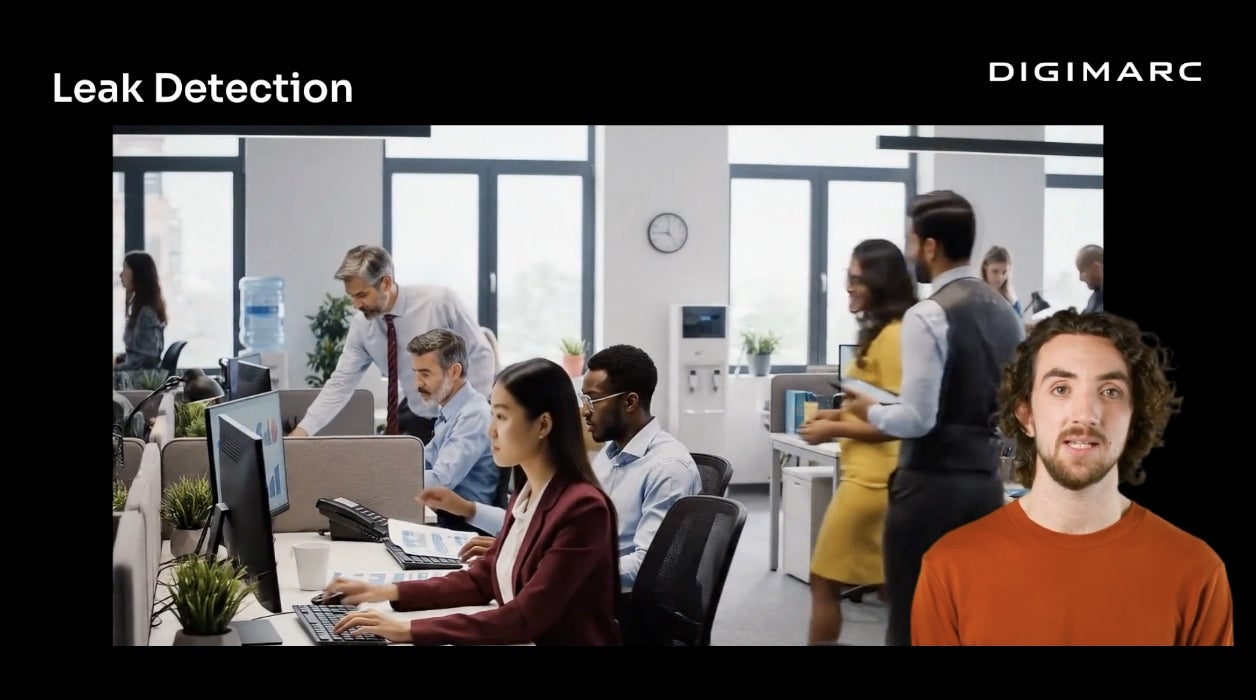A couple of weeks ago, we had the chance to attend the Active & Intelligent Packaging World Congress - AIPIA 2022. This year AIPIA joined forces with Packaging Europe’s Innovation Horizon summit.
AIPIA World Congress brings together the innovators transforming the world of consumer goods packaging. This year’s conference was exciting, highlighting both innovation and proof-of-concept. The event confirmed the acceleration of product digitization largely led by consumers demanding greater sustainability and transparency into the products they purchase, wear, and consume. Consumers are making purchasing decisions that align with their interests in personal health and the environment.
Following are my three biggest takeaways from this year’s conference, including insights into upcoming regulations such as the EU Digital Product Passport, and new technologies accelerating the Internet of Things at mass scale.
I have been in the business of providing digital identities for consumer products for close to 15 years now. Convincing CPG (Consumer Packaged Goods) brands and packaging manufacturers that they need an ‘on-pack’ digital strategy hasn’t always been straightforward or easy – until now. Not only are brands open to discussing product digitization, but brands are on the conference agenda leading the discussion!
In large part, interest and mass-scale adoption of product digitization strategies result from consumer trends like the need for digital information to be accessible in a frictionless manner. Also, the growing understanding of how to use digital triggers such as QR codes among brands and consumers. And more importantly, the demand for transparency into the composition and sustainability of products and packaging from both consumers and a regulatory standpoint.
Industry-wide Initiatives such as Sunrise 2027, the agreed upon date to make the transition to accepting 2D barcodes at point-of-sale, was discussed and progress was presented by several stakeholders. This step change in maturity also means that the time is right to think about data formats and interoperability. Several discussions focused on making sure that the digital identities and digital twins of consumer products can be used for a range of use cases over time as opposed to single campaigns.
Standards were a hot topic. I was pleased to see some of the initiatives my company helped build talked about as the baseline for needed change in the consumer goods industry. For example, the GS1 Digital Link standard is positioned as the de-facto standard for future-proofing product identities. Also, the more recent EPCIS 2.0 standard was referenced throughout the conference in conjunction with supply chain traceability and transparency use cases.
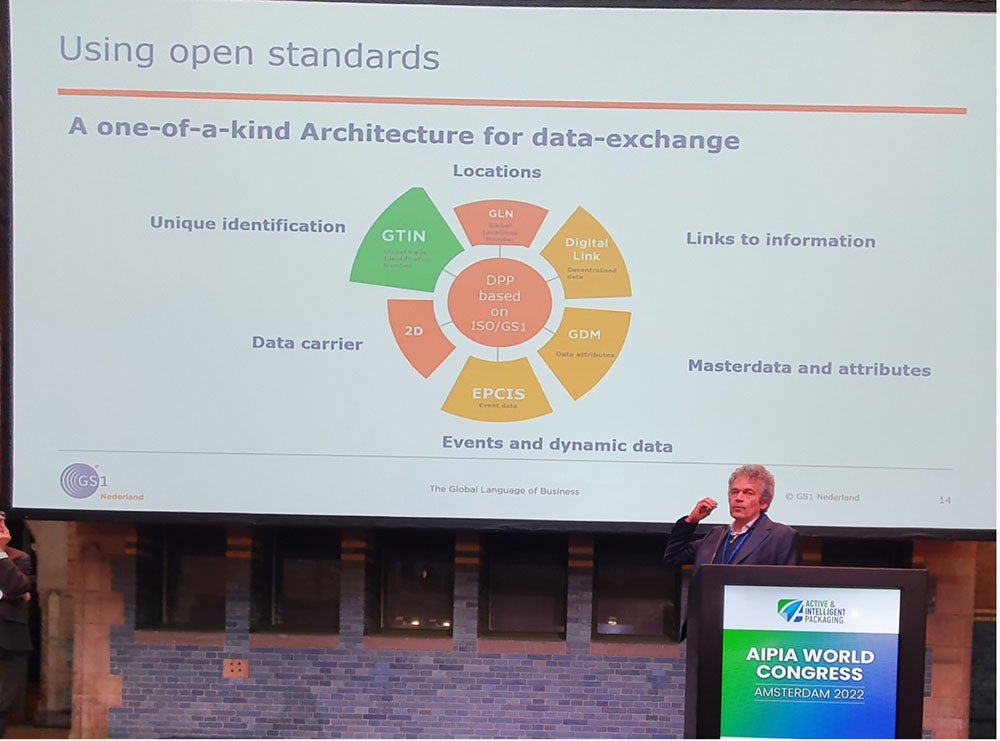
The momentum around digital product identities is also accelerated by upcoming regulatory frameworks. One such framework is the EU Digital Product Passport (DPP): a set of upcoming regulatory requirements enforcing many consumer products sold in the EU to feature a unique and accessible digital identity to help consumers make greener choices. AIPIA was not short of discussions around the EU DPP and about how the DPP is a real opportunity for brands to shine with their consumers versus a set of legal constraints only. Indeed, thanks to unique and consumer accessible product identities on pack, brands will have unprecedented ways of connecting directly with their customers.
It is expected that DPPs will be mandatory for selected product categories by 2024. While all legislation and the underlying principles aren’t yet set in stone, there are some details I can confirm. For instance, product data will need to be structured and accessed through a unique identifier. Rather than being only hosted centrally by the EU commission, the data will be decentralized and linked with the European Dataspace for Smart Circular Applications (EDSCA). Note that decentralized does not necessarily mean blockchain; it simply means, the data is not stored in a single centralized repository. Blockchain could be part of the blueprint, as illustrated by our recent Digimarc Labs project with IOTA but blockchain will unlikely be an absolute requirement for all DPPs.
Standards are also likely to be at the heart of the DPP implementations. GS1 presented their views with an architecture combining 2D codes (e.g., QR codes) using the GS1 Digital Link format as well as product traceability data stored using the EPCIS 2.0 format.
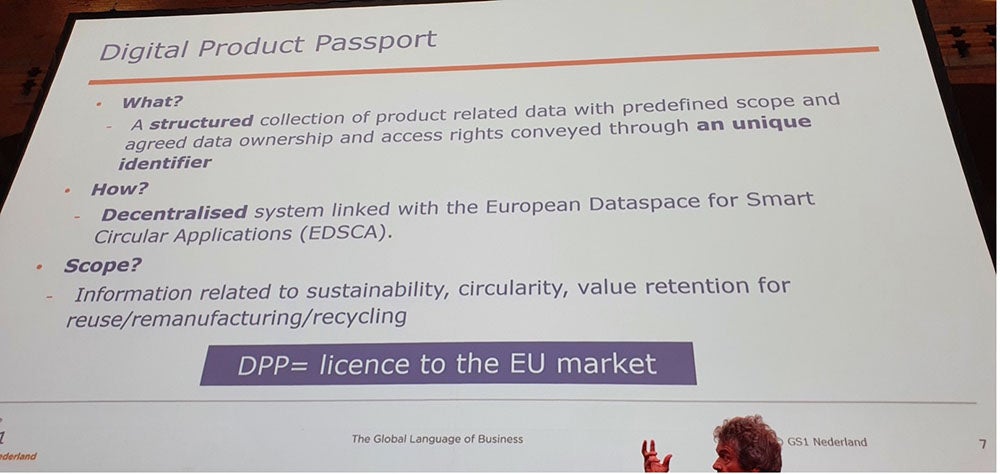
AIPIA is always a great place to get a glimpse of what the (near) future of product labels will look like. Several innovations were presented. Starting with Wiliot and their IoT Pixels: tags the size and thickness of a postage stamp capable of communicating via Bluetooth Low Energy. IoT Pixels are low-cost (between .10-.75 cents), battery-free, embedded sensors that sense temperature and location today, and shortly will sense occupancy, proximity, and humidity. Wiliot’s IoT Pixels are battery-free because they are powered by harvesting radio waves.
We were the first platform to integrate with Wiliot back in 2020. I was impressed to see the progress made by Wiliot over the past two years. IoT Pixels have clearly gained in stability and useability.
I introduced my blog stating that product digitization has come of age and that we are seeing the mass scale adoption of digital identities by consumer product brands. Wiliot pushes the boundaries of innovation even further, painting a picture of a ‘not too distant future’ when all products will have sensing capabilities.
For example, one of our recent Digimarc Labs proof-of-concept showed that IoT Pixels can be combined with the Digimarc Illuminate platform to enhance the digital identity of vaccines with temperature sensing capabilities. This allows scanning a watermark or QR code on the vaccine vial to get an accurate report of the temperatures the vaccine has been exposed to throughout its lifecycle.
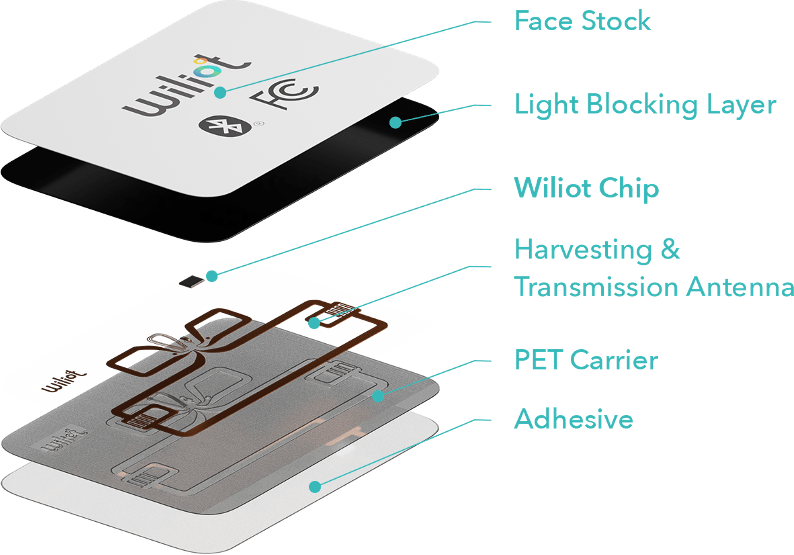
Wiliot was not the only sensing innovation present at AIPIA. Several other low-cost sensing technologies were showcased. Picking just a few examples, VTT presented NFC smart labels with sensing and energy harvesting capabilities based on biomaterials. This research is important because as labels get smarter, they become harder to recycle creating a negative impact on sustainability goals.
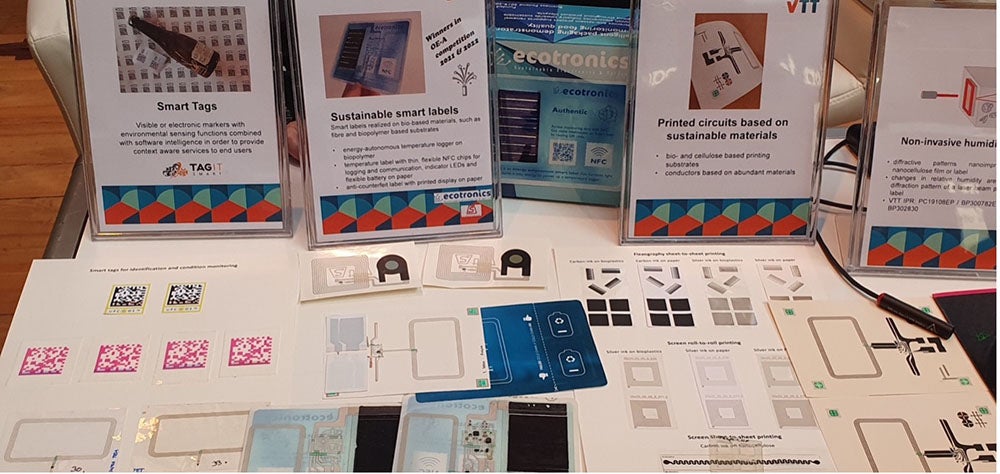
MyCol.si introduced functional inks capable of sensing temperatures in both a reversible and irreversible way. This allows printing labels that sense the current temperature but also record when the temperature passes a certain lower or upper threshold. This type of technology could improve and lower the cost of temperature monitoring for fresh produce and other consumer goods.
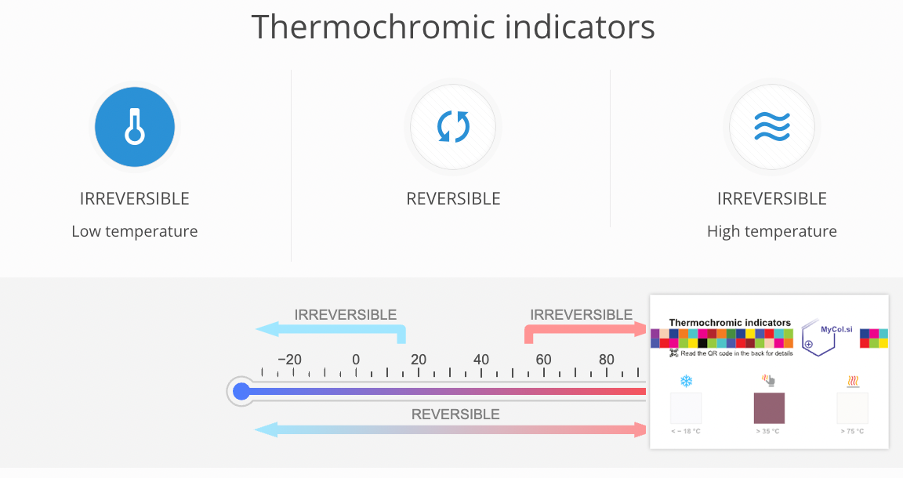
In summary, the 2022 edition of AIPIA was exciting – highlighting innovation and proof-of-concept for digitizing the world’s consumer products. The event confirmed the acceleration of product digitization largely led by consumers demanding greater sustainability and transparency into the products they purchase, wear and consume. Consumers are making purchasing decisions that align with their interests in their health and the environment.
As shared, upcoming regulations such as the EU DPP will support these consumer demands with industry wide initiatives. While industry innovators are bringing fine-grained sensing capabilities to billions of consumer products accelerating a mass-scale Internet of Things.
